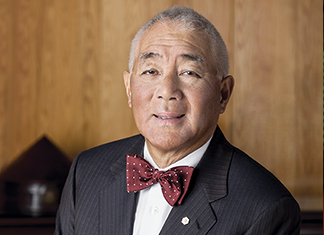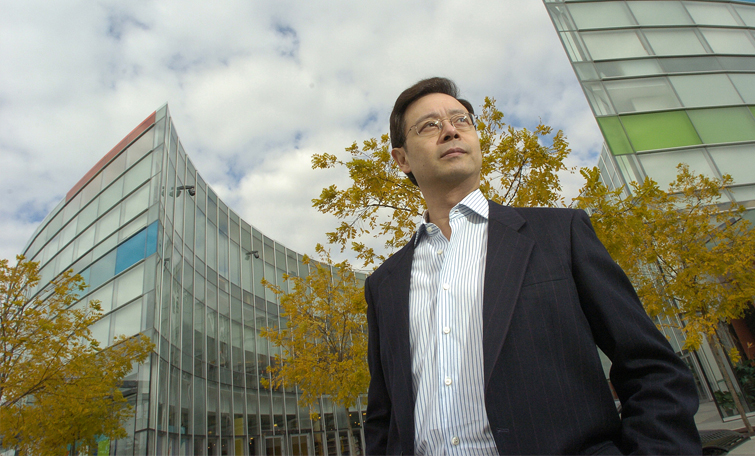A Legacy of Education in the Global Village
- Caifu Magazine | by Caifu Global
- EN

By: David S. Fushtey

Opinions on independent private colleges and on public universities in our work focus on the systems involved, but we often find that the big decisions for families involve more basic questions: where should children go to school and university, and how to support education and be remembered through legacy gifts? This column looks at the second question, as guidance on this larger context may be more difficult to find online.
Foreign students are increasingly important in Canada and the United States to diversify revenues and build long-term connections around the world. University executives and political leaders have remarked that the top students demonstrate discipline and skills for learning. They also note that the top prizes in education now are often Chinese, and increasingly young women. Such discipline is itself a contribution as a model in many different institutions. These reciprocal benefits need to be better respected and understood, which itself requires learned skills and knowledge.
Our first point is to clarify a few key words. The first word, school, generally means primary or secondary school, but it is also formally used to describe a specialized program in some faculties. It may also be used informally to describe a wide variety of programs, faculties, colleges, university-colleges and universities. Even a college and a university are often defined differently in different places, depending upon the blend of teaching and research. There are so many different labels that it is always advisable to ask, “what do you mean by ______________?”
The next key words are public and private. These words focus on the differences in the governance and funding of schools and universities, by looking at the relative source of funds and related decision-making. All educational institutions rely on both public (government) and private funding (both industry support and student tuition). The difference is the relative percentage of public funding and related decisions. There are no strict rules: generally a public university has the majority of funding from government sources and; a private university receives the majority of its funding from families or businesses. Decisions are then made according to either a public model of a public-interest board and academic senate, and the executive functions of a president, if publicly funded, or a private model board of trustees and president.
But all public universities, as well as private ones, also rely upon the generosity of private donations and bequests known as endowments to augment public funding. Supporting education in western life has been tracked back to the Romans, but we have noticed that it is a more universal value of respect around the world. An endowment is often intended to protect the capital and only disburses income earned in the manner specified. Often these endowments are in the form of direct funds, but may be corporate shares or stock known as corporate equity, or sometimes special assets of historical value or beauty.
Again as we have seen before in this column, the law and traditions are different in this regard between Canada and the United States and in many ways among states and provinces. In Canada the traditions and predominant laws for educational institutions generally are to support public benefits of education. Most universities and colleges in Canada are publicly funded; standards of entry and education are high due to public oversight. Inspired by foreign-student interest, more recently specialized private colleges or small private universities have been developed in Canada. These include specialized schools for film and digital media, language and business. As with any new venture, the opportunities to influence development are greater but as with any emerging organization careful questions and comparisons are advised.
In the United States the private universities are older and reflect independent traditions of advanced education. Harvard, Princeton, and Yale of the Ivy League are examples (the eight east-coast Ivy League schools were named when buildings were stone or brick and covered by ivy planted by graduates). Harvard traditionally has the honour of the largest endowment fund, of some US$35Bn. The education is good; a benefit of such private schools is also learning the political and social skills from fellow students, alumni and faculty to excel in business or politics.
Yet of the top ten universities in the world, assessed on quality of education and community, most surveys indicate that roughly half are public and half are private. Even indexes on “influence” indicate that although the very top two or three private schools prevail, increasingly public universities are ranked comparably for influence and reputation. The leadership qualities experienced in private schools in the past are now more broadly appreciated and formally taught in business and professional programs. Increasingly the need for continuing-education streams develops business-community programs such as Leaders of Tomorrow with Boards of Trade or Conference Boards, or just the wealth of information online.
There are no gifts more valuable to children than education, and none more valuable to the future than citizens of the world supporting education in different countries. Of note is the relative benefit of legacy gifts in the public and private realms, or the comparative profile of legacies in the oversupply of funds to well-endowed private schools. Many excellent public schools have endowments of $1Bn, or less, so both for recognition and leveraged value, bequests and gifts may be more appreciated and receive a higher profile and respect from such public universities. Ask questions and compare options, including ideas such as funding an independent foundation which supports students at a variety of institutions wherever they may wish to study.
Legacies or gifts in the past were often in the context of bricks-and-mortar legacies of capital works (buildings); today increasingly the need and means to touch people’s lives is in updating and upgrading facilities and openspaces, and helping individuals through scholarships and grants. Some of the largest philanthropic educational foundations are not tied to naming rights of buildings but to the more focussed systems and purposes of learning. An example would be the importance of learning basic governance skills of respect for diversity and collaboration; for risk management in business studies, gifts also can include conditions to support cross-cultural traditions in the arts and strategic design.















